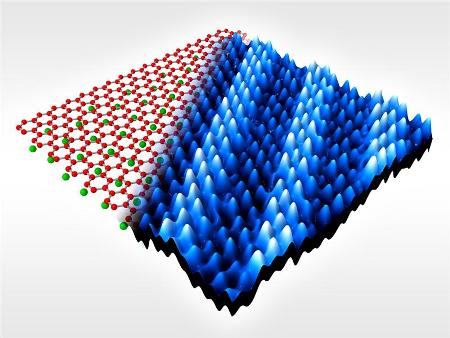A research team at the London Centre for Nanotechnology has for the first time found electronic stripes dubbed as ‘charge density waves,’ on the graphene sheet surface that produce a graphitic superconductor.
 Electronic stripes, called ‘charge density waves’, on the surface of a graphitic superconductor. (Credit: K.A. Rahnejat)
Electronic stripes, called ‘charge density waves’, on the surface of a graphitic superconductor. (Credit: K.A. Rahnejat)
The research team published its findings in the Nature Communications journal. Graphene is a one-carbon-atom-thick material with superior physical properties. Hence, the material is technologically significant and finds applications in transparent electrodes used in flat screen televisions, ultra-strong composite materials and fast energy-efficient transistors. Researchers are now working on to understand and manipulate the material’s unique properties.
During the study, the London Centre for Nanotechnology research team has supplied additional electrons to the surface of a graphene sheet by introducing calcium metal atoms below it. According to general theory, these extra electrons may spread out homogenously on the surface of the graphene sheet like the spreading of oil on water. On the contrary, the team observed that these additional electrons have automatically self-assembled into nanoscale stripes. For the study, the team has utilized a scanning tunneling microscope that can take pictures of individual atoms.
This surprising behavior illustrates that the extra electrons have their own life that is not linked directly to the original atoms of the graphene material. This finding paves the way to new possibilities in both technology and science. Based on the finding, the research team proposed a new method for encoding and controlling data wherein binary ones and zeros match up with stripes running from east to west and north to south, respectively.